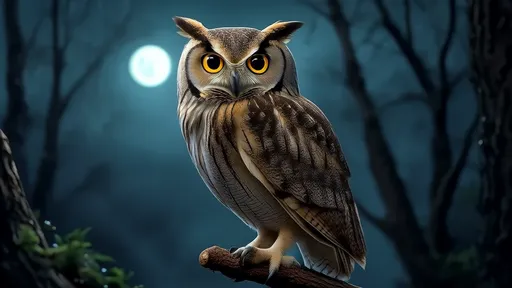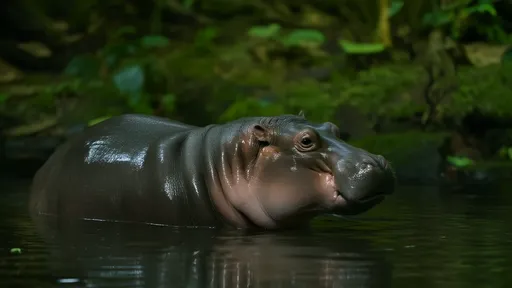The world of wildlife is full of fascinating creatures, each with its own unique charm. Among them, the pygmy hippopotamus stands out as a shy, elusive, and utterly captivating miniature version of its larger cousin. While the common hippopotamus is known for its massive size and aggressive demeanor, the pygmy hippo is a gentle, secretive animal that prefers the solitude of dense forests and swamps. This lesser-known species offers a glimpse into the diversity of nature, proving that even the most familiar animals can have surprising relatives.
The pygmy hippopotamus, scientifically known as Choeropsis liberiensis, is native to the rainforests and swamps of West Africa, primarily in Liberia, with smaller populations in Sierra Leone, Guinea, and Ivory Coast. Unlike its larger relative, which spends most of its time in water, the pygmy hippo is more terrestrial, though it still relies on water to keep its skin moist and regulate body temperature. These creatures are solitary by nature, coming together only to mate, and their nocturnal habits make them even harder to spot in the wild.
One of the most striking differences between the pygmy hippo and the common hippo is their size. While a full-grown common hippo can weigh up to 3,000 kilograms, the pygmy hippo rarely exceeds 275 kilograms. Their smaller stature allows them to navigate through dense vegetation with ease, and their streamlined bodies are better suited for life in the forest rather than open rivers. Despite their diminutive size, they share many physical traits with their larger cousins, including barrel-shaped bodies, thick skin, and stubby legs.
The behavior of the pygmy hippopotamus is another area where it diverges from the common hippo. Common hippos are highly social, living in groups called pods, and are known for their territorial aggression. Pygmy hippos, on the other hand, are loners. They mark their territories with dung and secretions from special glands but avoid direct confrontations. Their shy and reclusive nature has made them difficult to study in the wild, and much of what we know comes from observations in captivity.
Conservation efforts for the pygmy hippopotamus are critical, as the species is currently listed as endangered by the International Union for Conservation of Nature (IUCN). Habitat loss due to deforestation, agriculture, and human settlement is the primary threat to their survival. Additionally, they are sometimes hunted for their meat, though they are not a primary target for bushmeat trade. Protecting their remaining habitats and raising awareness about their plight are essential steps to ensure these unique animals do not disappear from the wild.
In captivity, pygmy hippos have become ambassadors for their species, helping to educate the public about the importance of conservation. Zoos and wildlife sanctuaries around the world have successfully bred them, contributing to a safety net population. However, breeding programs must be carefully managed to maintain genetic diversity and ensure the long-term health of the species. These efforts, combined with habitat protection, offer hope for the future of the pygmy hippopotamus.
The pygmy hippopotamus may not be as well-known as its larger relative, but it holds a special place in the animal kingdom. Its quiet, solitary existence in the dense forests of West Africa is a reminder of the delicate balance of ecosystems and the importance of preserving biodiversity. As we learn more about these enigmatic creatures, we gain a deeper appreciation for the wonders of nature and the need to protect them for generations to come.
Despite their elusive nature, pygmy hippos have captured the hearts of those who have encountered them. Their gentle demeanor, combined with their unique adaptations, makes them a subject of fascination for biologists and wildlife enthusiasts alike. Whether in the wild or in captivity, these miniature hippos continue to inspire awe and curiosity, proving that even the smallest and shyest creatures can leave a lasting impression.

By /Jun 10, 2025

By /Jun 10, 2025

By /Jun 10, 2025

By /Jun 10, 2025

By /Jun 10, 2025

By /Jun 10, 2025

By /Jun 10, 2025

By /Jun 10, 2025

By /Jun 10, 2025

By /Jun 10, 2025